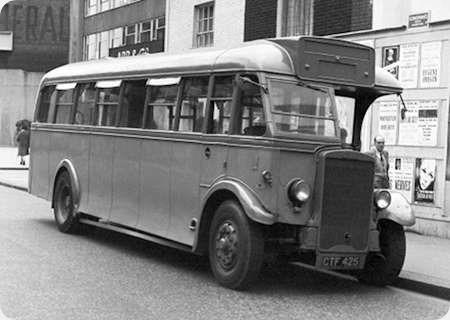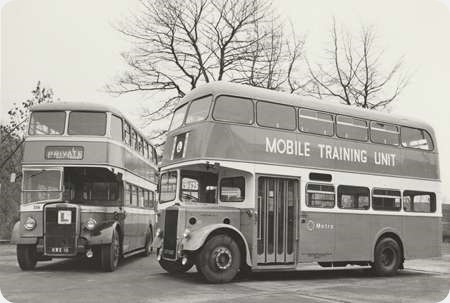Lancashire United Transport - Leyland Tiger - CTF 425 - 116
Lancashire United Transport
1938
Leyland Tiger TS8
Roe DP30F
Lurking in the back streets by Victoria Coach Station in 1961 and by then owned by a contractor is former Lancashire United Transport No.116, CTF 425, a Leyland TS8 of 1938 fitted with Roe DP30F bodywork. It was withdrawn by LUT in 1957. Lancashire United became a confirmed Leyland customer from the mid 1920s, though it dabbled in the thirties with some Dennis types, and built up a substantial fleet of TS7 and TS8 Tigers and TD Titans. It even managed to obtain examples of the relatively rare Tiger TS11 model during 1940. The LUT TS Tiger fleet was withdrawn during the 1950s, but three of the 1938 TS8s, CTF 434/5/8, originally fitted with Roe B32F coachwork, were refurbished in 1953 and equipped with full fronted Plaxton FC35F bodies. They lasted until 1960.
Photograph and Copy contributed by Roger Cox
11/06/18 - 06:00
Three further TS8s from 1939 were also rebodied by Plaxton in the same way as CTF 434/5/8. These were DTF 266/9/70. I was involved in a failed attempt to preserve DTF 269, the body of which was eventually lost to a fire.
Peter Williamson
12/06/18 - 06:34
Thanks for that additional information, Peter. I have tried to find a picture of these rebodied full fronted Tigers without success. A photo of a line up of some of LUT’s earlier 1936 TS7 batch with Metro-Cammell coachwork may be found here:- www.flickr.com/photos/gmts/16162288018
Roger Cox
12/06/18 - 06:35
After being a Leyland devotee before the war LUT pretty well forsook the make in the postwar era and became mainly wedded to Gardner engined products. Guy was the staple manufacturer for double deckers but they also had some late model Arab coaches and single deck buses from Atkinson. They were unusual for a Lancashire based operator in having no PD2’s and had only one batch of PD3’s bought at a time when Guy was having financial difficulties and the Arab was withdrawn from the market for a time. There were small batches of Daimlers but when Guy got back on its feet after the Daimler take-over they quickly returned to the Arab and even tried a solitary Guy Wulfrunian. Opo and Bus Grants spelled the end of the front engined bus and LUT ended its independent days buying the Daimler Fleetline.
Philip Halstead
14/06/18 - 07:46
There is a photo of one of the rebodied TS8s with a subsequent owner at www.flickr.com/photos/
Peter Williamson
15/06/18 - 08:23
Similar vehicle CTF 423 is preserved in the care of the Aire Valley Transport group I was lucky enough to have a ride on it a few years ago It gave a very spirited performance and was a pleasure to sample.
Chris Hough
Quick links to the - Comments Page - Contact Page - Home Page



